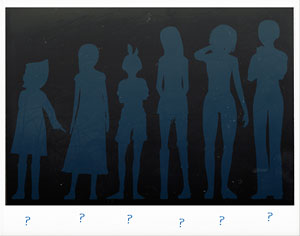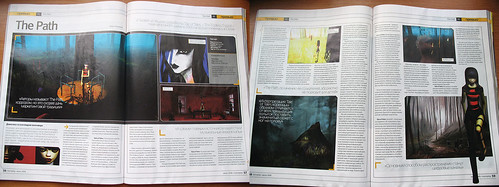Art games are on the rise in Germany. They’re even introducing a new name for it: “emogaming”. Though we have a feeling that the term will go the way of the “handy” (the German word for cell phone) in the rest of the world.
Neverthelless, the interest is genuine.
Last week, we participated, by video chat, in a symposium, taking place in Munich, called Emotional Gaming, about the “relation between gaming and emotionality”.
A few days ago, we were interviewed about The Graveyard for Zündfunk, a Bavarian radio show. The theme of the show was “emogaming”. They even had a professor talking about love in games. Have a listen, if you understand German:
[audio:Zundfunk-BavarianRadio-Emogames.mp3|titles=Zündfunk-BavarianRadio-Emogames]
And finally, also in German, is a long article about our work, how it is art and how that’s a good thing we need more of, on the popular Krawall website, entitled Spielekunst.
Die meisten Entwickler würden die Frage, ob Spiele Kunst seien, reflexartig bejahen, denn der Kunst haftet in unserer Gesellschaft schließlich ein positives Image an. Die Firma Tale of Tales macht Kunst-Spiele hingegen aus voller Überzeugung.
(rougly translates as “Most developers would answer the question whether games are art with “yes” by reflex, since art has a positive image in our society. Tale of Tales, however, make art games out of determined conviction.”)
Meanwhile, in the USA, Pullitzer prize winning game aficionados cast their doubts in mainstream newspapers about the artistic value of best selling games:
Narrative art of that caliber is distinguished by its ability to re-organize our preconceptions, to shift us into a world that’s always been there but that we’ve been afraid to acknowledge, and I’m not convinced that GTA IV pulls off that miracle.
and
Successful art tears away the veil and allows you to see the world with lapidary clarity; successful art pulls you apart and puts you back together again, often against your will, and in the process reminds you in a visceral way of your limitations, your vulnerabilities, makes you in effect more human. Does GTA IV do that? Not for me it doesn’t, and heck, I love this damn game.
Maybe we should invite Junot Díaz to have a look at our “emogames”… 



